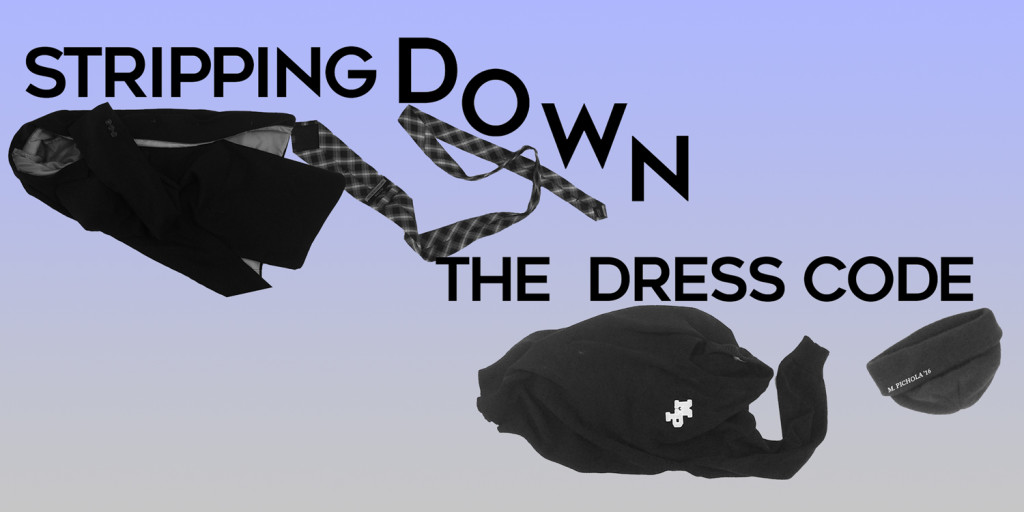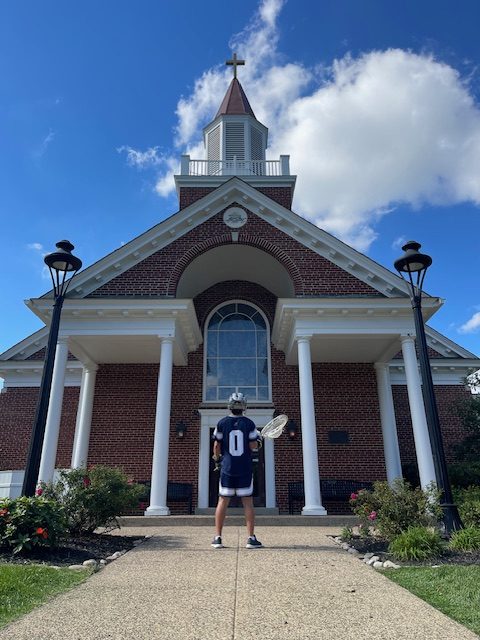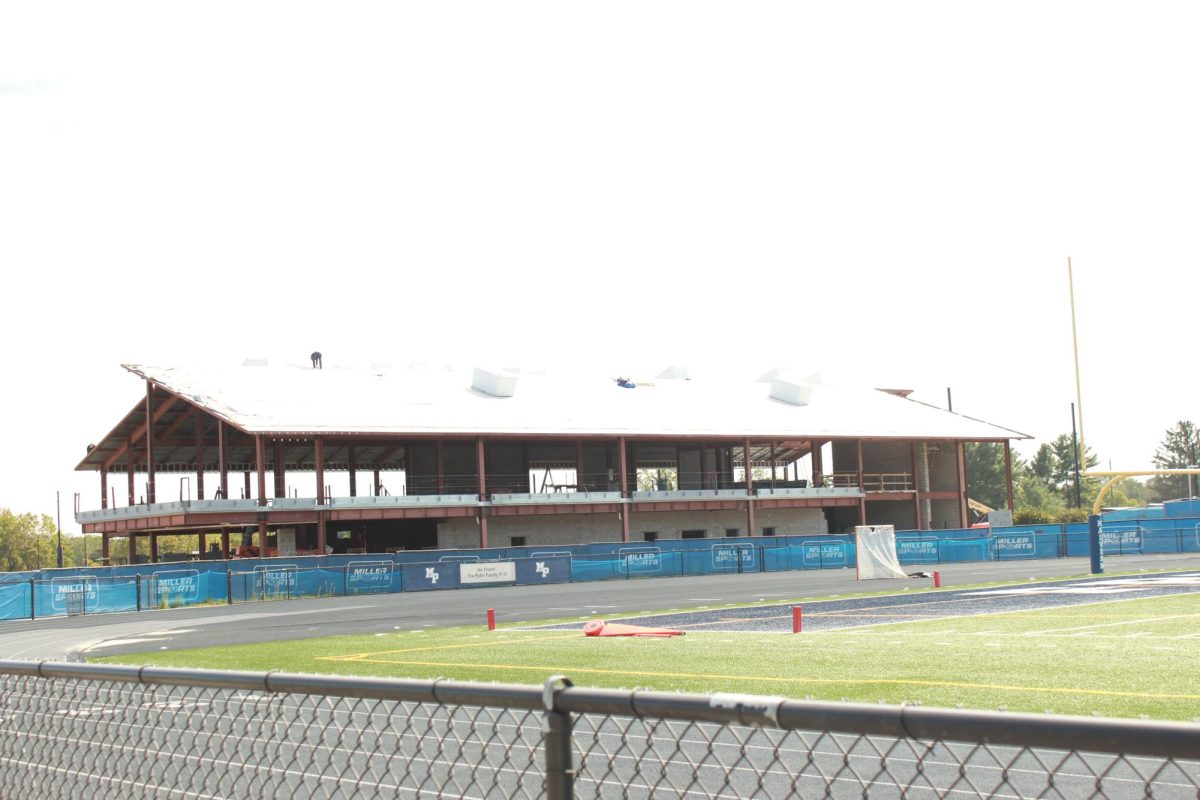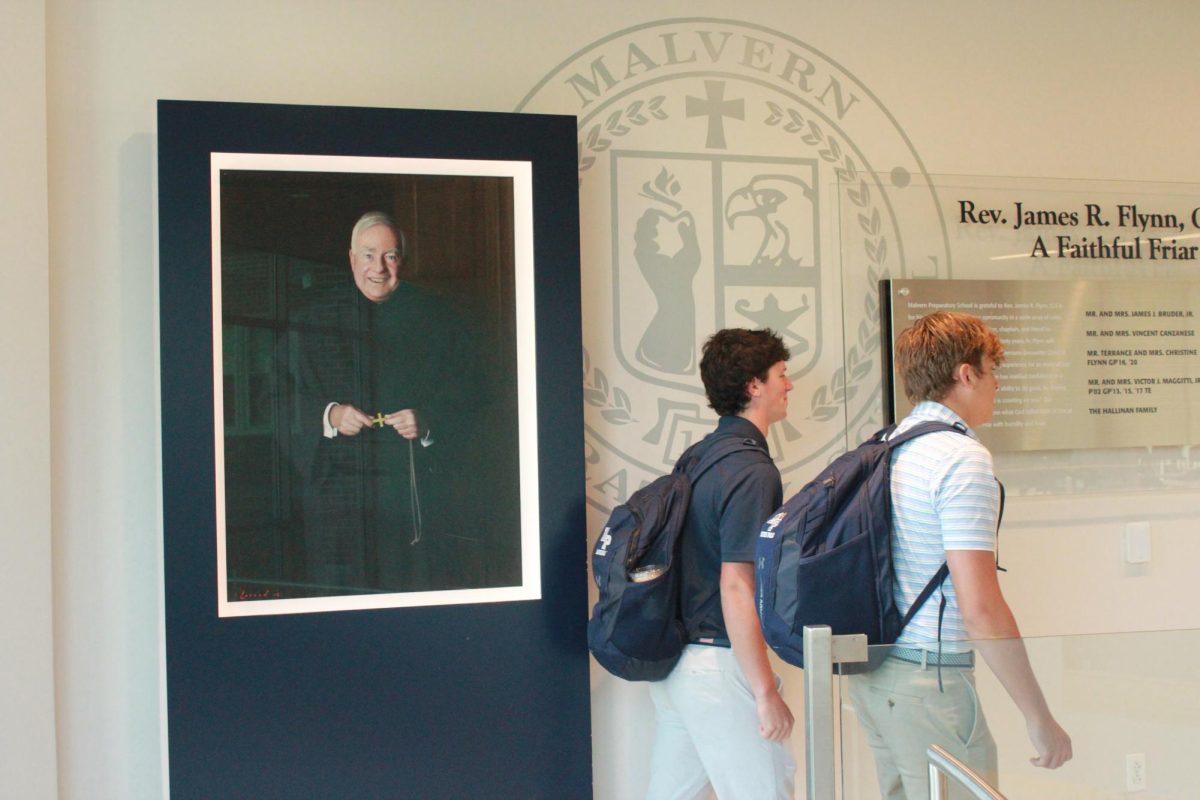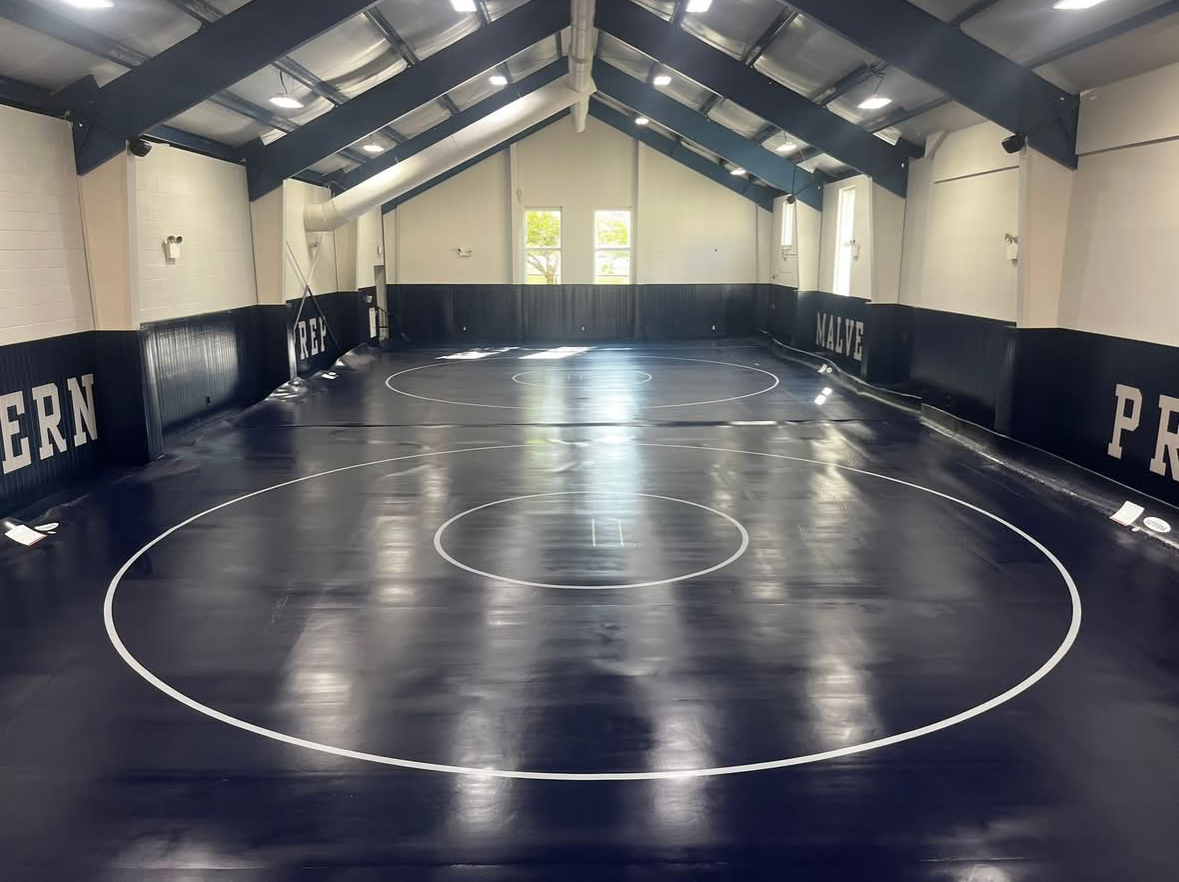
One student is wearing a collared shirt, belt, tie, and sport jacket – in complete dress code, but around him he sees:
Another student is wearing a collared shirt and belt, without a tie, with a sweatshirt – an obvious violation of the no-sweatshirt policy, but he goes the whole day without punishment.
Another is wearing a collared shirt, belt, and non-Malvern sweater, without a tie – an obvious violation of the tie and Malvern sweater policy, but he leaves for practice without any repercussions.
[perfectpullquote align=”right” cite=”” link=”” color=”” class=”” size=””]Since colleges rarely have dress codes, and since most professionals are straying from suits, why is Malvern still enforcing the same dress code from decades ago?[/perfectpullquote]
Another is wearing what he usually wears – a collared shirt, with a tie and sport jacket, without a belt – but that day he gets cafeteria duty for his violation. His fellow brothers all around him are also not in dress code, but he is singled out for violating dress code.
What is that student in dress code left to think? What is the student who gets in trouble left to think?
At its core, the dress code has three major goals: developing a student’s self respect, fostering in him self-discipline, and engendering a sense of unity with his peers, according to an email sent to the faculty only by Dean of Students Mr. Tim Dougherty.
The dress code has become extremely relaxed over the past months. It has become more and more common for students to wear sweatshirts, and not wear ties or sport jackets. Students have been rarely reprimanded for these offenses, but during the week of Jan. 11 Dougherty sent out two emails to students indicating that dress code would now be enforceable with a same-day detention.
Dougherty can send out emails to students all he wants, but if we don’t understand the purpose behind the policy, it is worthless.
However, we are presented with a conundrum. If we keep the dress code as strict as it is currently stated in the student handbook, students will continue to rebel and the administration will continue to turn the other way. If the dress code is taken away or reduced to a level of intangibility, the student body will not meet the three goals introduced by Dougherty.
However, there is a happy medium.
Over the past few years, Malvern has adapted its learning style to an ever changing business environment. With the advancements in technology in the 21st century, certain styles of learning have become obsolete and certain skills have become necessary to be successful.
The same holds true for dress code.
According to a survey run by The Telegraph, 34% of business professionals no longer wear suits to work and only would for a big meeting, conference, etc. The rest of American workers are comfortable wearing something vaguely presentable and devoid of stains. This is where that medium comes in.
Malvern is a college preparatory school with a mission, of course, to prepare its students for college. However, Malvern also seeks to instill in us values that we can carry with us in our professional career and beyond, thus preparing us for adulthood. Since colleges rarely have dress codes, and since most professionals are straying from suits, why is Malvern still enforcing the same dress code from decades ago?
Malvern has had a long tradition with the current dress code, and a significant portion of the community still supports it as is. But traditions change, and while we don’t know what the specifics of the change will be, one thing is certain – the students need to have a meaningful voice in a decision to reevaluate the dress code.
Students can look presentable in a button-down shirt, dress pants, sperrys, and a belt. They don’t have to be condemned to wearing their brother’s ripped suit jacket and the raggedy Malvern embroidered sweater.
With a more relaxed dress code, students will be more likely to adhere to its requirements while still getting the feeling of unity, self respect, and discipline.



